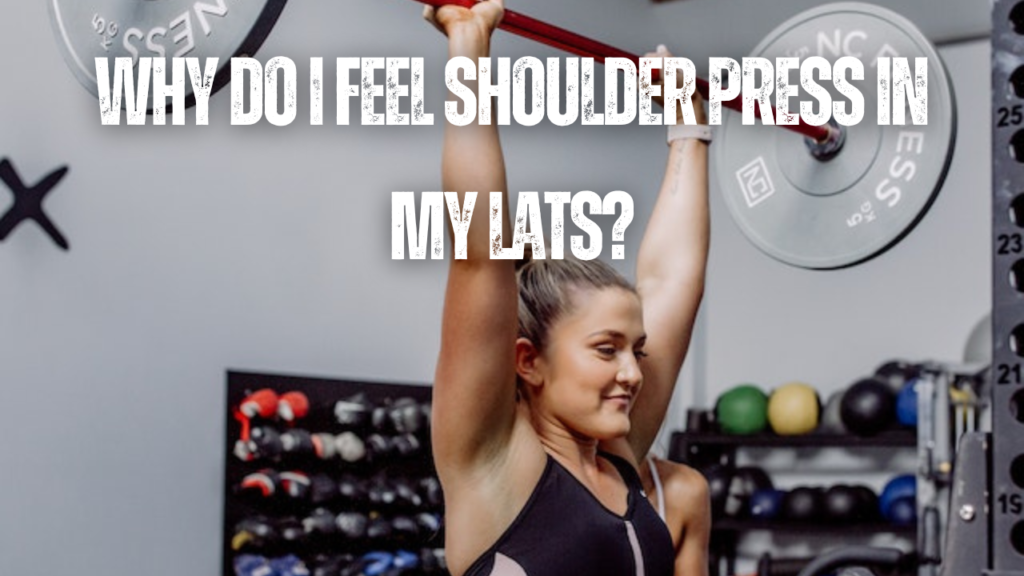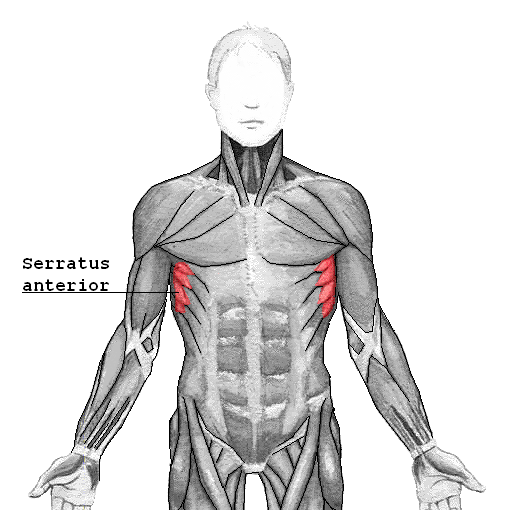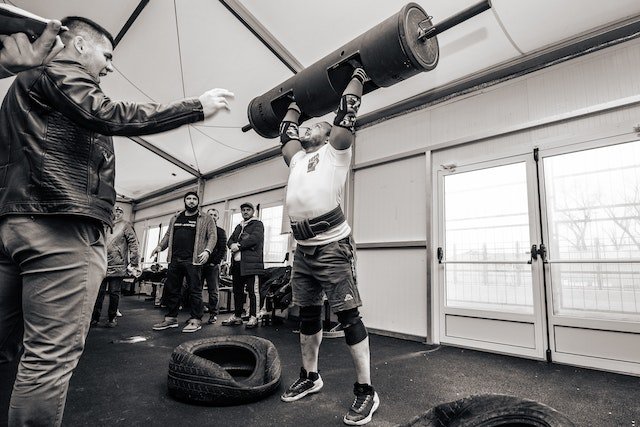
Why Do I Feel Shoulder Press In My Lats? 14 Things To Consider
The shoulder press should be easy, right? It certainly looks easy enough – lift the weights above your head, hold for a second and then lower them back down. But for many of us trying to improve our shoulders, getting it right is harder than it seems.
Whether you’re having trouble bringing the weight up or feel like you’re straining your lats more than necessary with what should be a simple exercise, don’t worry because there are plenty of ways to get around the issue.
In this blog post, I will explain why your lats are being felt more when doing shoulder presses, along with practical solutions that can help with this problem and are ready for any challenge!
Why do I feel shoulder press in my lats?
You can feel your lats more during the shoulder press for many reasons, and the main culprit would be due to the fact you do engage your lats during the exercise. Your lats are one of the main stabilizers during pushing movements in general and you can definitely feel them working to keep you stable when doing a shoulder press. The second reason why you may feel your lats more is because of any existing imbalances that you have. If for example, your lats are weaker than the other muscles around your shoulder joint, then your lats will be working harder to keep up with the strength of the other muscles. Improper form and posture can also contribute to why you may feel shoulder press in your lats more than necessary. If you’re leaning too far back or attempting to lift a weight that’s too heavy, your lats may be forced to do more work than necessary. Finally, if you have any previous injuries or tight lats, this can also cause you to feel shoulder press in your lats more than usual.
If you are feeling shoulder press more in your lats don’t worry, as it’s normally an easy fix, so lets’s find out how…
Stabilisers
Whenever you do any kind of pressing exercise, your lats will always be engaged to help you keep a stable position.
Stabiliser muscles are important for any kind of exercise, and they’re especially important when it comes to shoulder press. Your lats help keep your arms in line with your torso while also preventing them from wobbling around too much during the movement.
When doing a shoulder press, it’s not just your deltoids doing the work, it’s much more complex than that. Your core and lats work together with your deltoids to make sure you’re able to press the weight up without compromising form or stability.
So if you’re feeling shoulder press in your lats, it could be because they are forming part of the stabilising system for the exercise.
If you lack control and attempt to rush through the motion, your lats will be forced to work harder than necessary as they struggle to steady the load until you end the lift.
Eccentric phase
When lowering the weight from an overhead press, your lats are also working to control and decelerate the resistant force. This is why you might feel it in your lats more during the eccentric (lowering) phase of each rep.
This is especially true if you don’t use good form and let the weight drop quickly. Your lats have to work harder to control the weight, and this can lead to more strain in that area.
This is why it’s so important to maintain control of this portion of the lift no matter which exercises you are doing, as it can help avoid any kind of injury and improve overall muscular performance.
To ensure that you are getting the most out of your exercise, be sure to control the weight throughout its entire range of motion. If you simply drop it as it lowers, then you aren’t making use of all benefits this workout has to offer.
Using a slower tempo on your reps (3-4 seconds for the eccentric phase) can help reduce the amount of strain on your lats and make sure you’re using proper form throughout the exercise.
Serratus Anterior or Teres major
Another muscle group often engaged during overhead pressing is the serratus anterior or Teres major. These muscles are important for stabilising your shoulder joint and can help to keep your shoulder blades down and back as you perform the exercise.
The serratus anterior is the muscle that connects your shoulder blades to the ribcage and helps you keep a neutral posture while lifting. If these muscles are weak, then your lats may be recruited to help with the stabilisation, or you might actually be feeling these rather than your lats.
The Teres major is located in the back of your shoulder and helps you pull the humerus bone up towards your shoulder joint. Once again, you may be feeling the shoulder press here rather than your lats.
The serratus anterior can usually be strengthened using cable exercises and bodyweight exercises such as push-ups.
The teres major can be strengthened using exercises such as cable rows, face pulls and band pull aparts.
Stretching and foam rolling in this area can help to create better mobility and stability in the shoulders, thus reducing the strain during overhead pressing.

Proper form and technique
There are certain techniques that you can use to make sure you’re not overworking your lats when doing shoulder presses.
The most important thing is to keep a good posture and a neutral spine throughout the movement. Make sure you’re not leaning too far back while pressing the weight up, as this can put a lot of stress on your lats and lower back.
You also want to make sure that you’re not pressing the weight too far forward. Instead, you should be pressing the weight straight up and keeping your arms in line with your torso. This will help take some of the strain off your lats and ensure you’re using proper form.
You can do the shoulder press standing up or sitting down, sitting upright on a bench. Using the bench can help take some of the load off your lats and can be a better option for those with existing lower back issues.
Make sure your elbows are tucked in close to your body, as this will help keep your lats engaged and prevent any kind of shoulder impingement.
Also make sure your foot placement is correct, keeping your feet flat and your toes pointing straight ahead. have your feet shoulder-width apart or staggered one in front of the other for stability.
Leaning back
One of the most common mistakes people make when doing the shoulder press is leaning back too far to press the weight overhead. Doing this will put a lot of strain on the lower back and also make your lats work harder than necessary.
People tend to lean back more when the weight they are trying to press is too heavy for them to lift with the correct form, so make sure to use a weight that you can control and press without leaning back excessively.
You want to make sure you are staying upright and pressing the weight straight up. Leaning back can put a strain on your lower back, so it’s important to maintain a good upright posture throughout the entire movement.
If you are sitting to do the shoulder press you want to make sure your back is placed firmly against the back support and you aren’t arching your back, which will compromise your form.
Related: Why is my lateral raise so weak?
Grip position
A lot of people tend to have their grip too wide when doing the shoulder press. Having a wider grip will put more strain on your lats because they are having to work harder to keep your arms in place and stabilize the weight.
Your grip should be slightly narrower than shoulder-width, with your hands placed slightly higher than the middle of the bar. This will help you keep a good stable position and make sure that your lats are not taking too much of the load.
Similarly, if you are gripping the bar too narrow, then your biceps and forearms will be taking too much of the load and you won’t be able to lift as heavy as you possibly could.
If you are using dumbbells then this shouldn’t be an issue, just make sure that when you are pressing the dumbbells that your elbows are tucked in close to your body and you’re keeping a good balance throughout the motion.
Too heavy
Using a weight that is too heavy can also lead to you feeling the shoulder press more in your lats than necessary.
If the weight is too heavy then your form will suffer and you’ll start to lose control of the weight as it is pressed up. This can lead to compensation patterns and put a strain on the lats and other parts of the body.
You risk injury if you’re using a weight that is too heavy, so make sure that the weight you are using is manageable and allows you to keep good form throughout the entirety of the movement.
Shoulder injuries are no laughing matter, and the lengthy recovery process that comes with them can be extremely difficult.
If you can’t control the weight and maintain a neutral spine throughout the entire range of motion then you’ll probably need to reduce the weight. Stick with a lighter weight and focus on perfecting your form.

Weak lats
If you are feeling the shoulder press mostly in your lats then it could mean that your lats need to be strengthened.
The latissimus dorsi muscles play an important role in stabilizing the shoulder joint, so if they are weak then they won’t be doing a good job of supporting your shoulder and keeping it properly aligned during pushing movements.
So if you feel like your lats are not engaged enough or that they are weak, it is important to strengthen them in order to improve your shoulder press form and protect yourself from injury.
Exercises like lat pulldowns and bent-over rows are great for strengthening the lats, but there are also more specific shoulder press variations that can help target the lats and improve shoulder press performance, such as single-arm overhead press and neutral grip press.
Whenever you are doing back exercises be sure to engage your scapula as you pull the weight towards you, this will help to activate the lats and give you a better mind-muscle connection.
Imbalances
If you feel your lats more than other muscles during the shoulder press, it could be a sign of an imbalance. It’s important to work on your muscular balance and strength in order to avoid injury and ensure that you are getting the most out of your shoulder press.
It is important to assess why you feel your lats more and work on strengthening the weak areas. If your shoulders are weak then it is a good idea to work on strengthening those muscles with exercises like lateral raises, face pulls and external rotations.
If your lats are weak then you should focus on exercises that target them like lat pulldowns, bent-over rows and single-arm overhead presses.
Having a well-rounded fitness program is the key to avoiding imbalances and ensuring that your body is strong, stable and injury free.
Restricted ROM
If you have a restricted range of motion (ROM) in your shoulders, then you may feel the shoulder press more in your lats.
Having a limited ROM can be caused by tight muscles or joint restrictions, so it is important to assess why you have this issue and work on improving your flexibility and mobility.
Stretching, foam rolling and dynamic warm-ups are great for improving your overall range of motion. You can also target specific areas that are tight with targeted stretches or mobilization drills.
It is important to address any mobility issues that you have in order to improve form and ensure that you are getting the most out of the shoulder press.
If you have recently recovered from an injury, this could be another reason why your ROM is restricted, the muscles in question will be tight and weak.
It is important to ease back into exercise and work on strengthening the weakened muscles to ensure that you are using the shoulder press with good form and preventing injury.
Related: Sore glutes after doing overhead press?
Tight lats
Tight lats can also be the culprit for why you are feeling your shoulder press in your lats because it limits your ability to activate other muscles around the shoulder joint.
If you are feeling tightness in your lats during the shoulder press, think about why this might be. Did you have a heavy back session the last time you worked out? Are your lats generally tight?
If you think that the tightness is due to a recent back session, then it is important to wait until you have recovered before doing shoulder press again or consider changing the programming of your fitness routine.
If the tightness is a chronic issue, then it is important to work on increasing your flexibility and mobility with dynamic warm-ups, stretching and foam rolling.
Final thoughts…
The shoulder press is a great exercise for strengthening the entire shoulder region and developing upper body strength.
If you feel your lats more during the shoulder press, then it is important to assess why this might be and address any imbalances or tightness that you may have.
It is important to ensure that you are using good form to get the most out of the exercise and avoid injury. Working on strengthening weak areas, improving mobility and flexibility and changing up your fitness program can help to get you back on track.
Do you feel shoulder press in your lats and have these tips helped? Let me know in the comments section below.


